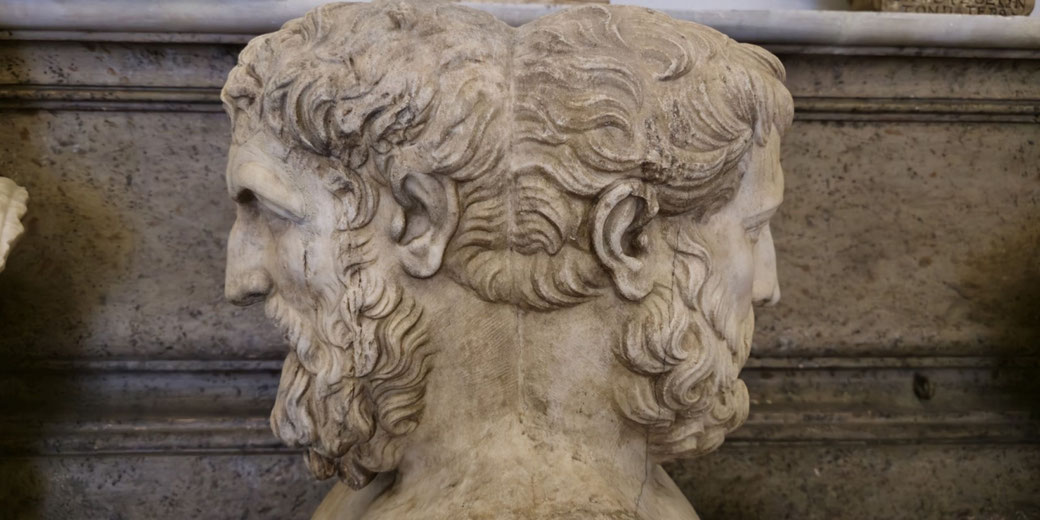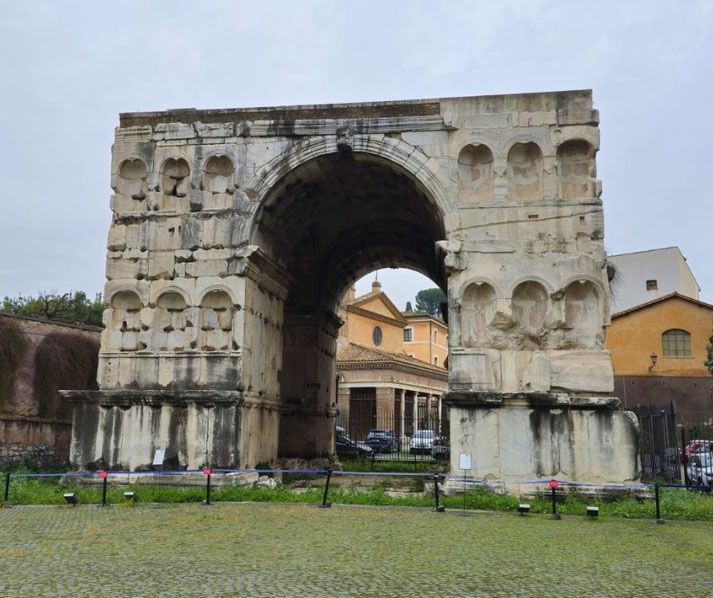Janus: Roman god of the New Year, who sees both yesterday and tomorrow

At the start of the new year, the Romans took the time to worship the strange god Janus. This odd deity is often overlooked when discussing ancient Romand religion, yet he was considered to be a pivotal member of the divine pantheon.
With his two faces: one face gazing into the past and the other peering into the future, Janus was thought to guard gates, doorways, and the passage of time itself.
But how did the Romans worship him?
Why does he hold such a prominent position at the start of the Roman calendar?
And what does his mysterious nature reveal about the Roman worldview?
Who was the Roman god Janus?
Deriving from the Latin 'ianua,' meaning 'door' or 'gateway,' Janus's very name highlights his role as the guardian of transitions, overseeing all beginnings and endings.
This linguistic connection underlines the fundamental concept of duality that Janus represents—not just in physical spaces but in the metaphysical aspects of time and the human experience.
In Roman mythology, the dual-faced imagery of Janus is a potent symbol reflecting the god's ability to see into the past and the future simultaneously.
This unique aspect conveys the notion that all beginnings are inherently linked to endings, and every entrance also serves as an exit.
Janus’s dual gaze symbolizes the continuous cycle of life and the interconnected nature of opposing concepts, such as war and peace, youth and age, or chaos and order.
He presides over important transitions in human lives, such as marriages and births, highlighting his role in the critical moments that shape human destiny.
This multifaceted symbolism indicates a profound understanding of the complexity of life's journey, embodying the Romans' appreciation for the nuanced interplay of different forces and stages in life.

What stories did the Romans tell about Janus?
Unlike many of his divine counterparts, his origins and myths are not tied to Greek antecedents, marking him as a distinctly Roman deity.
Janus's significance in Roman religion is underscored by his domain over beginnings, gates, transitions, time, and even endings, making him an omnipresent figure in the lives of the Romans.
Janus's mythological tales, though less narrative-driven than those of gods like Jupiter or Mars, are deeply woven into the fabric of Roman culture and religious practice.
One of the most notable myths involves his relationship with the nymph Ovid, where he is said to have bestowed upon her the gift of prophecy in exchange for her love.
This story illustrates Janus's connection to knowledge and foresight, attributes essential for a deity governing beginnings and transitions.
He is credited with welcoming Saturn to earth, ushering in a golden age of prosperity and peace.
This act of hospitality and its resultant golden age further cement Janus's image as a god of transitions, capable of turning tumultuous times into periods of peace and abundance.
How was Janus worshipped?
The most famous temple dedicated to Janus was the Janus Geminus, or the Temple of Janus, located in the Roman Forum.
This temple, rather unique in its architectural design, was not a temple in the traditional sense but a passageway with gates on either end.
It held immense symbolic importance for the Romans, as its gates would be open during times of war and closed during peace.
The act of opening or closing these gates was not only a religious ritual but also a public declaration of the state of the Roman Republic, reflecting the intertwined nature of religion and governance in Rome.
The temple's presence in the heart of the Roman Forum underscored Janus's significance in Roman society.
The Roman Forum was the epicenter of Roman public life, hosting political discussions, trials, and commercial activities.
Having the Temple of Janus in such a prominent location served as a constant reminder of the god's importance in overseeing beginnings, transitions, and endings, both in peace and in war.
Apart from the Janus Geminus, other smaller shrines and altars dedicated to Janus were scattered throughout the city.
These shrines were places where individuals could offer prayers and sacrifices to Janus, especially during times of personal or communal transitions, such as weddings or the beginning of new ventures.
On the first day of January, which was named after Janus, Romans would perform rituals and offer sacrifices to honor him, asking for blessings for the new year.
This ritual further emphasizes Janus's association with beginnings and transitions.

God of the New Year: Why January bears his name
Janus's profound connection with the Roman calendar is most directly observed in the month of January, named after Janus, which marks the start of the new year.
The choice to dedicate the first month of the year to Janus is reflective of his role as the god who oversees all beginnings, including the commencement of time itself.
In this way, Janus became intrinsically linked with the concept of time and its cyclical nature in Roman culture.
The beginning of January, and thereby the new year, was a time of celebration and reverence for Janus.
Romans would engage in rituals and offer sacrifices to Janus in the hopes of securing his blessings for prosperity and success in the year ahead.
These rituals were not mere formalities but an integral part of welcoming the new year, embodying the Romans' deep respect for the passage of time and the transitions it brought.
The practice of exchanging good wishes and giving gifts during the start of January can also be traced back to these ancient customs, further highlighting Janus's enduring impact on cultural traditions related to time and beginnings.
He was also considered vital in marking other important times and seasons within the Roman calendar.
His dual-faced image, looking both forward and backward, served as a metaphor for the Romans’ understanding of time as an endless continuum, where past events and future possibilities are inextricably linked.
This understanding is deeply reflective of the Roman approach to history and future planning, where lessons from the past were constantly used to inform future decisions and actions.
What do you need help with?
Download ready-to-use digital learning resources
Copyright © History Skills 2014-2025.
Contact via email
With the exception of links to external sites, some historical sources and extracts from specific publications, all content on this website is copyrighted by History Skills. This content may not be copied, republished or redistributed without written permission from the website creator. Please use the Contact page to obtain relevant permission.





